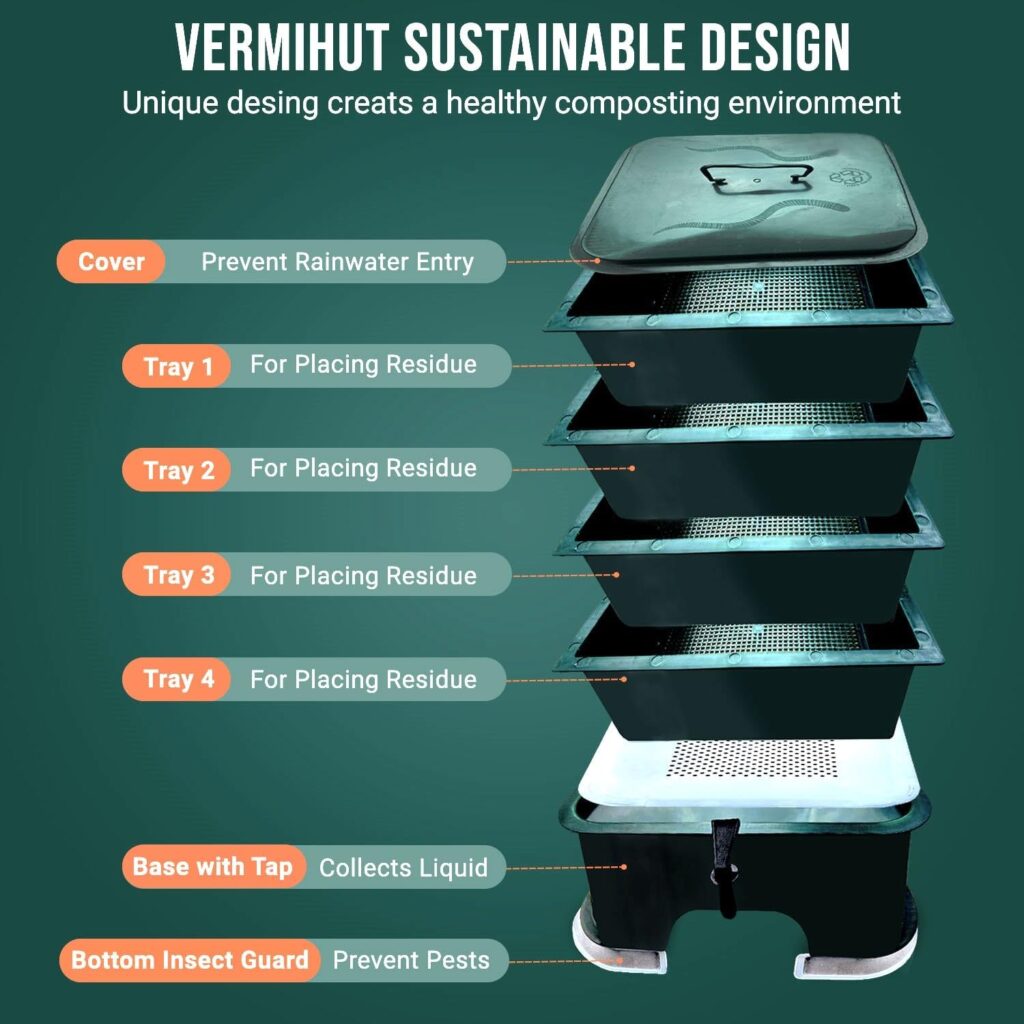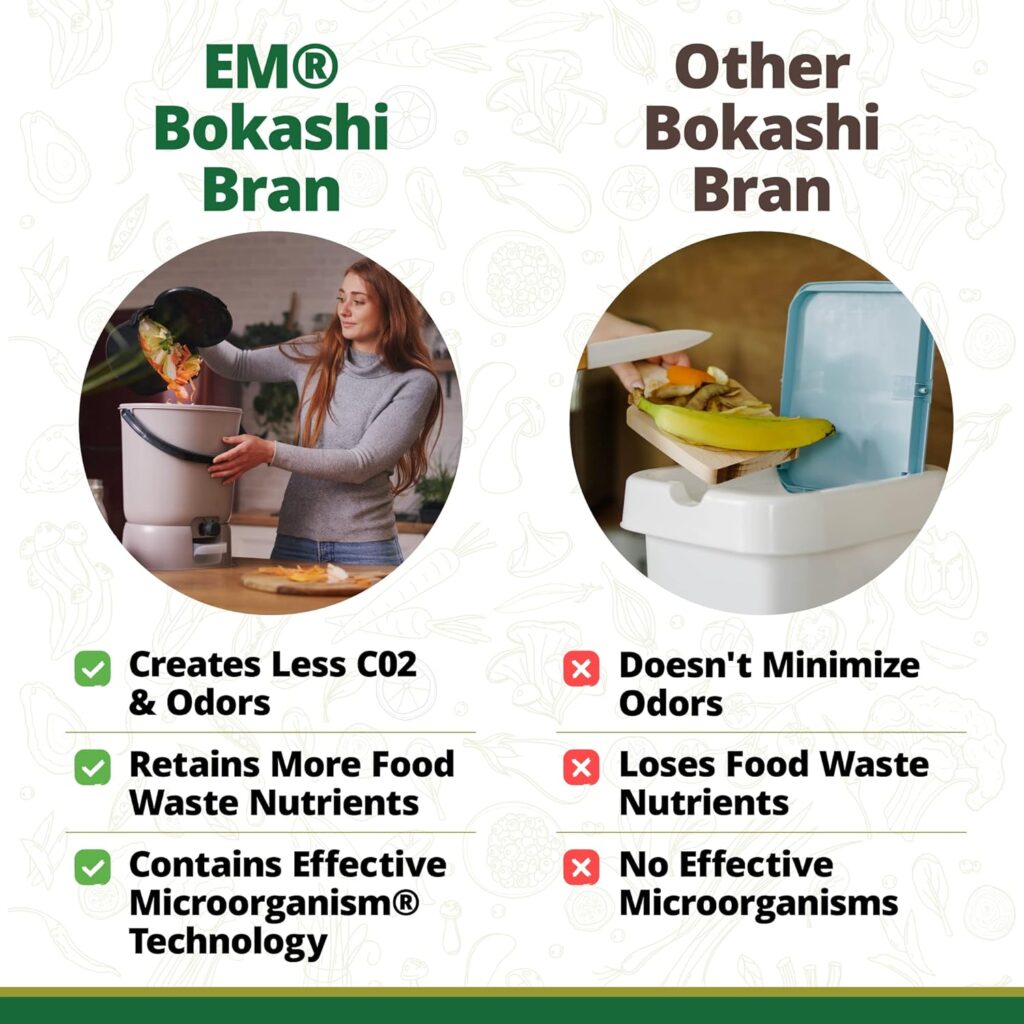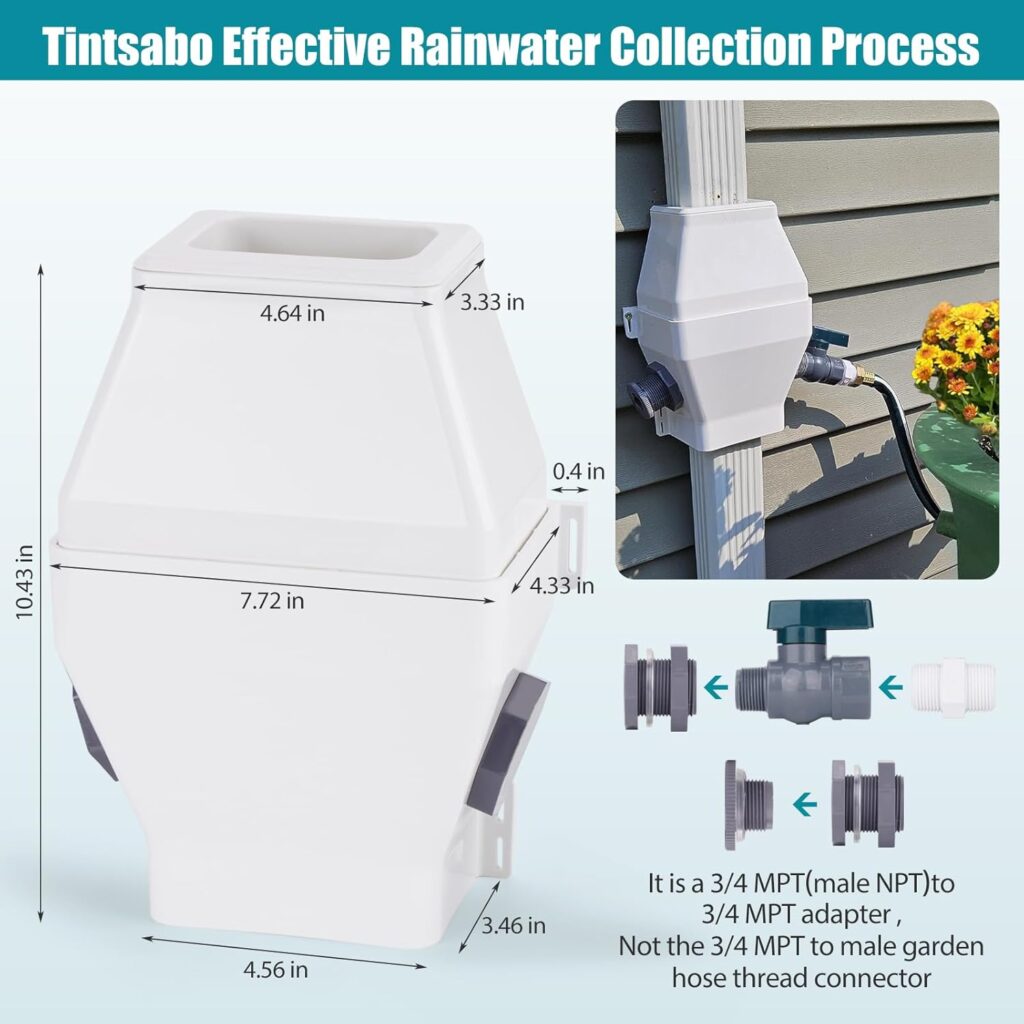Sustainable Gardening Practices For Urban Areas
Urban gardening has become essential for creating sustainable, livable cities. As urban areas expand, the need for green spaces becomes increasingly crucial.
Sustainable gardening practices in urban areas beautify our surroundings and contribute to improved air quality, biodiversity, and overall well-being.
In this comprehensive guide, we’ll explore five best practices for sustainable urban gardening, complete with specific examples and valuable insights for aspiring green thumbs.
If you make a purchase through my links, I earn a small commission as an Amazon Associate.
1. Vertical Gardening: Reaching New Heights
In urban environments where space is at a premium, vertical gardening offers a creative solution to maximize growing potential. This technique involves cultivating plants on vertical surfaces, such as walls, fences, or specially designed structures.
Living Walls and Green Walls
One popular method is the use of living walls or green walls. These systems range from simple hanging pockets filled with soil and plants to complex modular panels with built-in irrigation.
The Semiahmoo Library in Surrey, British Columbia, showcases a stunning 3,000-square-foot green wall that enhances the building’s aesthetics, improves air quality, and reduces energy costs.
DIY Vertical Gardens
For home gardeners, vertical gardening can be achieved with DIY projects like pallet gardens or by using commercially available vertical planters. Ideal plants for vertical gardens include herbs, succulents, and trailing plants like ivy or strawberries.
Considerations for Vertical Gardening
When designing your vertical garden, consider the weight of the structure when fully watered. Ensure your wall or support system can handle the load, especially for larger installations. Additionally, think about the light requirements of your chosen plants and how they’ll receive water and nutrients in a vertical setup.
Benefits of Vertical Gardening
Vertical gardens offer many benefits beyond space-saving. They can act as natural insulation for buildings, reducing energy costs.
They also improve air quality by filtering pollutants and producing oxygen.
In urban areas prone to the heat island effect, vertical gardens can help cool the surrounding air.
Maintenance Tips
Regular maintenance is crucial for the success of your vertical garden. This includes:
- Checking the irrigation system regularly
- Pruning and trimming plants to maintain shape and health
- Monitoring for pests and diseases
- Replacing plants as needed
- Ensuring the structure stays secure and stable
Check out the price of Mr. Stacky 5 Tier Stackable Vertical Garden here.
2. Composting: Turning Waste into Black Gold
Composting is a cornerstone of sustainable gardening, allowing urban gardeners to reduce waste while creating nutrient-rich soil amendments. This process involves the decomposition of organic matter, such as kitchen scraps and yard waste, into a valuable resource for plants.
Vermicomposting
For urban dwellers with limited outdoor space, vermicomposting (composting with worms) is an excellent option. A small worm bin can be kept indoors, even in apartments, and can process several pounds of kitchen waste per week.
The resulting worm castings are an incredibly rich fertilizer that can supercharge your plants’ growth.
To start vermicomposting:
- Choose a suitable container with drainage holes
- Add bedding material like shredded newspaper or cardboard
- Introduce red wiggler worms (Eisenia fetida)
- Add kitchen scraps regularly, avoiding meat, dairy, and oily foods
- Harvest the castings every few months
You can find the price of The Original Vermihut Plus 5 – Tray Worm Composter Vermicomposting Starter here.
Bokashi Composting
Another space-saving option is Bokashi composting, an anaerobic fermentation process that can break down all types of food waste, including meat and dairy. This method is odorless and can be done in a sealed bucket under your kitchen sink.
The Bokashi process involves:
- Adding food waste to a special bucket
- Sprinkling Bokashi bran (containing useful microorganisms) over each layer
- Sealing the bucket and allowing fermentation for 2-4 weeks
- Burying the fermented waste in soil or adding it to a traditional compost pile
You can view the price of TeraGanix EM Premium Bokashi Bran here.
Traditional Composting
For those with outdoor space, traditional composting stays an effective method. To maintain a healthy compost pile, aim for a balance of “green” (nitrogen-rich) materials like fresh grass clippings and kitchen scraps, and “brown” (carbon-rich) materials like dry leaves and paper.
A good ratio is about 3 parts brown to 1 part green.
Benefits of Composting
Composting offers many benefits:
- Reduces waste sent to landfills
- Creates nutrient-rich soil amendments
- Improves soil structure and water retention
- Supports useful soil microorganisms
- Reduces the need for chemical fertilizers
Troubleshooting Common Composting Issues
- Foul odors: Add more brown materials and turn the pile more often
- Slow decomposition: Ensure proper moisture levels and add more green materials
- Pests: Cover food scraps with brown materials and avoid adding meat or dairy
- Too wet: Add more brown materials and ensure proper drainage
- Too dry: Add water or more green materials
3. Rainwater Harvesting: Capturing Nature’s Bounty
In urban areas where water conservation is crucial, rainwater harvesting can significantly reduce the demand on municipal water supplies while providing an excellent source of irrigation for your garden.
Basic Rainwater Harvesting Systems
A basic rainwater harvesting system can be as simple as placing a rain barrel under a downspout to collect roof runoff. Even a small rain barrel can make a big difference.
A 1,000-square-foot roof can collect about 600 gallons of water from just 1 inch of rainfall.
The price of Tintsabo’s Rainwater Collection System can be found here.
Advanced Rainwater Harvesting
More advanced systems might include larger storage tanks, filtration systems, and pumps for distribution. The Bullitt Center in Seattle has implemented a comprehensive rainwater harvesting system that collects, filters, and stores rainwater for use in irrigation and even potable water after treatment.
Benefits of Harvested Rainwater
Harvested rainwater is free and free from the chemicals often found in municipal water supplies, making it ideal for your plants. It’s also softer than tap water, which can be useful for certain plants.
Designing Your Rainwater Harvesting System
When designing your system, consider:
- Your roof area and local rainfall patterns
- Storage capacity needed
- Filtration requirements
- Intended use of the water (irrigation only or potable use)
- Local regulations regarding rainwater harvesting
Maintaining Your Rainwater Harvesting System
Regular maintenance is essential:
- Clean gutters and downspouts regularly
- Inspect and clean filters
- Check for leaks in tanks and pipes
- Flush the system annually
- Test water quality if used for potable purposes
To prevent mosquito breeding in your rain barrel, cover all openings with fine mesh screens and consider adding a few drops of vegetable oil to the water surface to prevent mosquitoes from laying eggs.
4. Companion Planting: Fostering Plant Partnerships
Companion planting is the practice of growing different plants together for mutual benefit. This technique can improve pest control, enhance pollination, and maximize space utilization – all crucial factors in urban gardening.
The Three Sisters Method
A classic example of companion planting is the “Three Sisters” method used by Native American farmers. This involves planting corn, beans, and squash together.
The corn provides a natural trellis for the beans to climb, the beans fix nitrogen in the soil to nourish the corn and squash, and the squash’s large leaves shade the soil, retaining moisture and suppressing weeds.
Companion Planting in Small Spaces
In urban gardens, companion planting can be adapted to small spaces. For instance:
- Planting basil near tomatoes can repel pests and improve the flavor of the tomatoes
- Marigolds planted throughout the garden can deter a variety of pests while adding a pop of color
- Nasturtiums can act as a trap crop for aphids, protecting other plants
- Planting carrots and onions together can help deter pests that affect both crops
Considerations for Companion Planting
When planning your companion planting, consider not just the above-ground interactions and the below-ground needs of plants. Some plants have deep roots while others are shallow-rooted, allowing you to maximize soil usage.
Benefits of Companion Planting
- Natural pest control
- Improved pollination
- Enhanced nutrient uptake
- Increased biodiversity
- Maximized space utilization
Companion Planting Chart
This chart shows which plants grow well together and which ones don’t:
| Plant | Good Companions | Bad Companions |
|---|---|---|
| Tomatoes | Basil, Marigolds, Carrots | Potatoes, Cabbage |
| Beans | Corn, Carrots, Cucumbers | Onions, Garlic |
| Lettuce | Carrots, Radishes, Cucumbers | None known |
| Peppers | Onions, Basil, Carrots | Beans |
| Cucumbers | Beans, Peas, Radishes | Potatoes, Aromatic Herbs |
5. Native Plant Landscaping: Embracing Local Ecology
Incorporating native plants into urban gardens is a sustainable practice that supports local ecosystems, reduces water consumption, and minimizes the need for chemical inputs.
Benefits of Native Plants
Native plants are adapted to local climate conditions and soil types, making them more resilient and easier to maintain than non-native species. They also provide essential habitat and food sources for local wildlife, including important pollinators.
Native Plants in Urban Landscapes
The High Line park in New York City has incorporated a variety of native plants into it’s design, creating a thriving ecosystem in the heart of Manhattan. The park features over 500 species of plants, many of which are native to the region, attracting birds, butterflies, and other wildlife.
Choosing Native Plants for Your Garden
When selecting native plants:
- Research plants native to your specific region
- Consider factors like sun exposure, soil type, and water requirements
- Think about the mature size of the plants and how they’ll fit in your space
- Choose a variety of plants that bloom at different times to provide year-round interest and resources for wildlife
Incorporating Native Plants in Small Spaces
Urban gardeners can start small by incorporating native plants into existing landscapes or container gardens. Some ideas include:
- Creating a native plant container garden on a balcony or patio
- Replacing a portion of your lawn with native groundcovers
- Adding native shrubs or small trees to create vertical interest
- Planting native perennials in existing flower beds
Maintaining Native Plant Gardens
Native plant gardens generally need less maintenance than traditional gardens, but they still need some care:
- Water deeply but infrequently to encourage deep root growth
- Avoid over-fertilizing, as many natives prefer lean soil
- Leave seed heads and dead foliage over winter to provide food and shelter for wildlife
- Prune only as needed to maintain shape or remove dead growth
- Monitor for invasive species that may compete with your native plants
Many local botanical gardens and native plant societies offer plant sales and educational resources to help you choose and care for native species in your area.
Frequently Asked Questions
What are the best plants for vertical gardening in small spaces?
Some excellent plants for vertical gardening in small spaces include herbs like basil, thyme, and mint – succulents such as sedum and echeveria – and trailing plants like pothos, string of pearls, and ivy. These plants are generally low-maintenance and can thrive in the limited soil space of vertical gardens.
How can I start composting in my apartment?
You can start composting in your apartment using methods like vermicomposting or Bokashi composting. For vermicomposting, you’ll need a small bin, bedding material, and red wiggler worms.
Bokashi composting uses a special bucket and Bokashi bran to ferment food waste.
Both methods are odorless when done correctly and can be managed in small spaces.
Is rainwater safe for watering edible plants?
Generally, rainwater is safe for watering edible plants. However, if you’re collecting rainwater from a roof, be aware that it may contain contaminants from roofing materials or air pollution.
For edible plants, it’s best to use a first-flush diverter to remove the initial, most contaminated runoff, and consider using a filtration system if you have concerns about water quality.
What are some easy companion planting combinations for beginners?
Some easy companion planting combinations for beginners include:
- Tomatoes with basil and marigolds
- Carrots with onions
- Beans with corn
- Lettuce with radishes
These combinations can help deter pests, improve flavor, and maximize space in your garden.
How do I identify native plants for my area?
To identify native plants for your area, you can:
- Visit local botanical gardens or nature centers
- Consult with your local extension office or native plant society
- Use online databases like the Lady Bird Johnson Wildflower Center’s Native Plants Database
- Purchase regional native plant guidebooks
- Attend native plant sales or workshops in your community
Can I grow native plants in containers?
Yes, many native plants can be successfully grown in containers. Choose plants that are suitable for the size of your container and have similar water and light requirements if planting many species together.
Some native plants that do well in containers include coneflowers, black-eyed susans, and native grasses.
How can I attract pollinators to my urban garden?
To attract pollinators to your urban garden:
- Plant a variety of native flowers that bloom at different times
- Include plants with different flower shapes to attract diverse pollinators
- Avoid using pesticides
- Provide a water source, such as a shallow dish with pebbles
- Leave some bare soil for ground-nesting bees
- Consider installing a bee hotel for solitary bees
What are some low-maintenance vegetables for urban gardens?
Some low-maintenance vegetables that are well-suited for urban gardens include:
- Leafy greens like lettuce, spinach, and kale
- Cherry tomatoes
- Bush beans
- Peppers
- Herbs like basil, cilantro, and chives
These plants generally need less space and care than larger vegetable varieties.
How can I improve soil quality in my urban garden?
To improve soil quality in your urban garden:
- Add organic matter like compost or well-rotted manure
- Use cover crops to add nutrients and improve soil structure
- Avoid compacting the soil by using designated paths
- Mulch to keep moisture and suppress weeds
- Consider using raised beds to control soil quality
- Test your soil and amend as needed based on the results
What are some creative ways to maximize space in a small urban garden?
To maximize space in a small urban garden:
- Use vertical gardening techniques like trellises and wall planters
- Implement square foot gardening methods
- Grow plants in hanging baskets
- Use container gardening on patios, balconies, or windowsills
- Incorporate edible landscaping by mixing vegetables and herbs with ornamental plants
- Utilize space-saving varieties like dwarf fruit trees or bush varieties of vegetables
By implementing practices like vertical gardening, composting, rainwater harvesting, companion planting, and native plant landscaping, urban gardeners can make a significant positive impact on their local environment. Remember, every small green space counts in the larger picture of urban sustainability.
Happy gardening!



